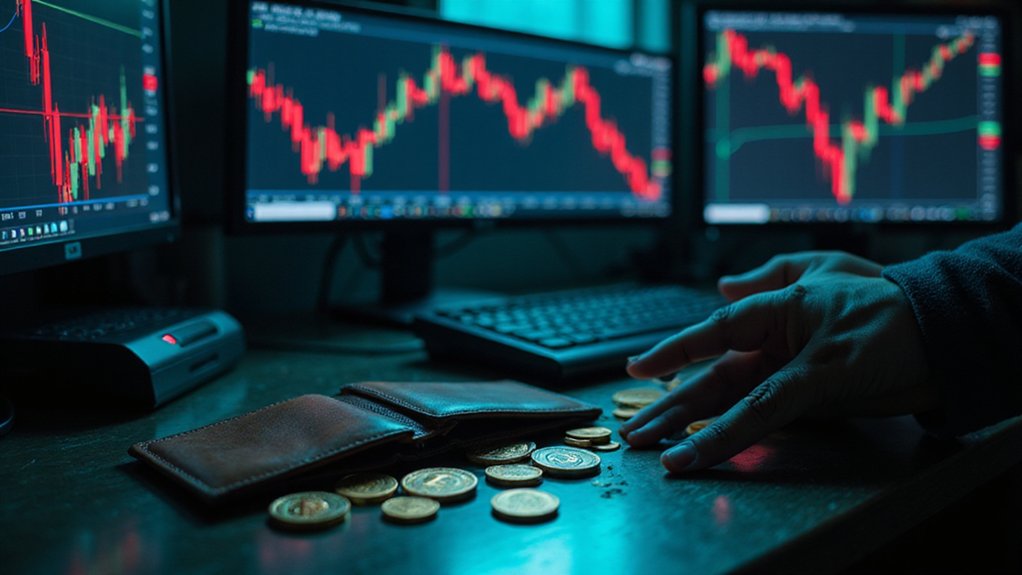Millions of dollars vanish into thin air every day in crypto markets, and it’s not magic—it’s manipulation. The numbers are staggering. In 2023 alone, pump-and-dump schemes flagged over 90,000 tokens and netted criminals roughly $241.6 million. That’s a lot of stolen lunch money.
These scammers have turned market manipulation into an art form. They start with the classic pump-and-dump, where groups coordinate to artificially inflate prices before dumping their holdings faster than you can say “blockchain.” The victims? Usually newcomers who bought into exaggerated ICO claims and flashy promotions. In 2024, over 2 million tokens were launched, but only 1.7% actively traded within the last 30 days—most are abandoned after the initial hype fades. By the time they realize what’s happening, they’re holding worthless digital dust.
Wash trading adds another layer to this criminal onion. Traders buy and sell the same asset repeatedly, creating fake volume that would make a Hollywood prop department jealous. Across Ethereum, BNB Smart Chain, and Base, wash trading hit $704 million in 2024. It’s like watching someone play ping-pong with themselves and claiming they’re hosting a tournament. High-profile allegations against Binance demonstrate how even major exchanges face scrutiny for potentially misleading investors through such practices.
Exchanges themselves aren’t innocent bystanders. Over half of unregulated exchanges fail basic authenticity tests, suggesting they’re inflating volumes to look more popular than a high school quarterback. Meanwhile, regulated exchanges generally pass these tests. Shocking, right?
Then there’s spoofing and layering, where traders place massive orders they never intend to execute. It’s the financial equivalent of faking left and going right, except people lose real money. These tactics are banned in traditional finance, but crypto? Different story.
The biggest players in this rigged game are the whales—holders with enough crypto to move markets single-handedly. During Bitcoin’s 2017 bull run, whale activity and suspicious USDT flows were all over the price surges. They exploit low liquidity and off-peak hours like predators stalking prey. AI systems have emerged as potential safeguards, with some capable of predicting market movements with up to 66% accuracy, helping investors identify suspicious activity.
Detection methods exist, thankfully. Analysts use behavioral patterns, transaction clustering, and statistical tests like Benford’s Law to spot the fakes. But here’s the thing: as detection improves, so do the scammers’ tactics. It’s an endless game of cat and mouse, and retail investors are usually the cheese.
References
- https://econone.com/resources/blogs/cryptocurrency-market-manipulation/
- https://www.chainalysis.com/blog/crypto-market-manipulation-wash-trading-pump-and-dump-2025/
- https://aisel.aisnet.org/cgi/viewcontent.cgi?article=1088&context=icis2021
- https://research.kaiko.com/insights/anatomy-of-market-manipulation-in-defi
- https://www.philadelphiafed.org/-/media/frbp/assets/working-papers/2024/wp24-14.pdf









